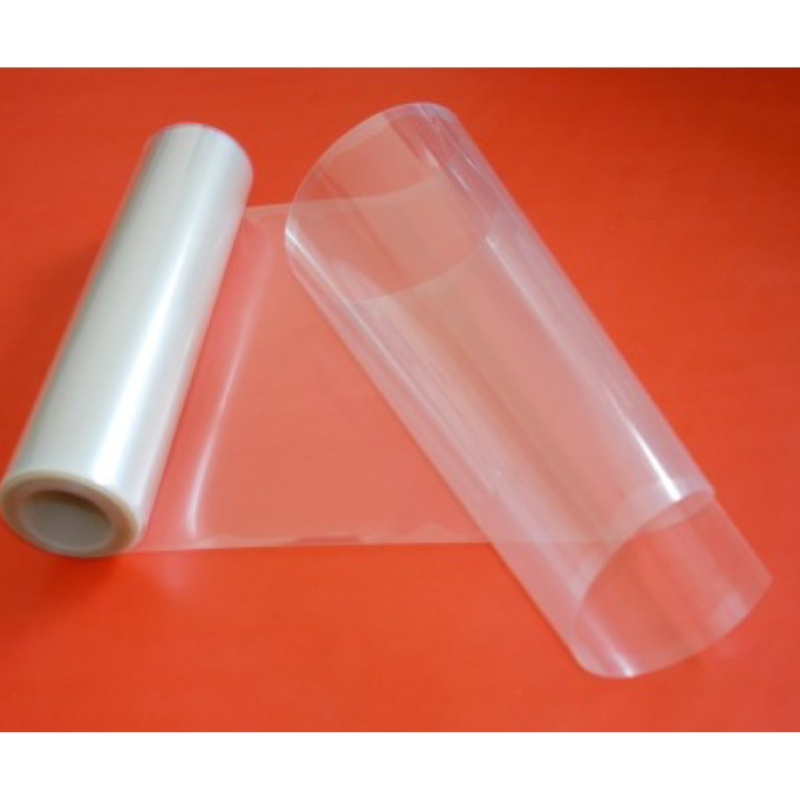
Reference: 10HS ECHO - 5Mts
Reference: 10HS ECHO - 5Mts
Reference: BASE-U-4
Reference: UA-002-64
Brand: ONSET
Reference: VH400-2M
Brand: VEGETRONIX
Reference: DS1922E-F5
Brand: iBUTTON MAXIM INTEGRATED


PFSA D50-R ePTFE Reinforced Proton Exchange Membrane
PFSA D50-R ePTFE Reinforced Proton Exchange Membrane (PEM) is used to separate the anode and cathode compartment of PEM fuel cell stacks that usually consume H2/Air or H2/O2 as the fuel/oxidant and having the capability for delivering high current densities without compromising the safety aspect (which necessitates the use of a relatively thin membrane). It is quite a common practice in the fuel cell industry to use thin (50 microns or less) reinforced or unreinforced PFSA membranes in order to achieve high current densities that are relevant to the commercial applications. PFSA D50-R ePTFE Reinforced Proton Exchange Membrane has a thickness of 50 microns (+/- 2 microns for the variations in the thickness). This material has a backing plastic on one side.
Considering D50-R broadens your horizon by providing an equally valuable avenue to explore, alongside Nafion
The mechanical reinforcement in this membrane is based on the microporous ePTFE which has 3-D porous regions where the ionically conducting PFSA is wet impregnated via solution cast method. The major benefit of mechanically reinforced PFSA membranes would be their significantly enhanced operational lifetime compared to the unreinforced PFSA membranes due to swelling related stresses being taken up by the ePTFE reinforcement. One of the major limitations of the mechanically reinforced PFSA membranes is their lower proton or ionic conductivity compared to unreinforced membranes because of less ionically conducting material per unit volume (while ePTFE reinforcement is quite porous, it does have a mass regardless). While this mechanically reinforced PFSA membrane was originally developed for vanadium redox flow battery applications and its ideal application would be vanadium redox flow batteries, though since it is manufactured in the protonic form, it can also be used for standard PEM fuel cell applications too. While it is not a common practice, this membrane product can also be used in PEM water electrolyzer, direct methanol fuel cells (DMFCs), direct formic acid fuel cells (DFAFC), microbial fuel cells (MFC) and other similar applications and it is always advised that the end-user to take into consideration of the thickness of the PFSA membrane for their particular application and how it may effect the performance positively or negatively.
PFSA D50-R ePTFE Reinforced Proton Exchange Membrane is based on the chemically stabilized perfluorosulfonic acid material and it is shipped in the acid (H+) form (which is also known as protonic form). Chemical stabilization is also known as end-group stabilization where the carbon atoms that end of the PFSA polymer chains are fully fluorinated. Chemically stabilized PFSA membranes will exhibit substantially lower fluoride ion release compared to the PFSA membranes manufactured from unstabilized PFSA resin. Functional groups (also known as sulfonic acid sites) for this PFSA membrane are based on the long side chain for its chemical structure.
Proton exchange membranes are also known as cation exchange membranes in the market. This PFSA membrane performs as a separator and solid electrolyte (without the need of a liquid acid) in a variety of electrochemical cells that require the membrane to selectively transport protons or other various cations across the cell junction (or between anode and cathode catalyst layers). The polymer is chemically resistant and durable.
Membrane Properties
| Thickness | 50 micrometers (+/- 2 micrometers) |
| Basic Weight (g/m²) | 100 grams/m2 (+/- 5 grams/m2) |
| Conductivity (S/cm) | TBD |
| Ion Exchange Capacity | TBD |
| Swelling (%) | ≤ 7% / 7% (MD/TD) (based on NB/T 42080-2016) |
| Tensile Modulus | ≥ 300 MPa / 300 MPa (MD/TD) (based on NB/T 42080-2016) |
| Tensile Strength - max. (MPa) | ≥ 20 MPa / 20 MPa (MD/TD) (based on NB/T 42080-2016) |
| Elongation to Break (%) | ≥ 200% / 200% (MD/TD) (based on NB/T 42080-2016) |
| Puncture Strength (gf) | ≥ 400 gf (based on NB/T 42080-2016) |
| Membrane Hydrolytic Properties | |
| Water content (% water) | 3% (+/-2%) (based on NB/T 42080-2016) |
Your review appreciation cannot be sent
Report comment
Report sent
Your report cannot be sent
Write your review
Review sent
Your review cannot be sent
Reference: 11060016
Brand: FUEL CELL
Reference: UA-PARTSKIT
Brand: ONSET
Reference: 39260
Brand: Innoquest, Inc.
Reference: STP-5
Brand: Meatrol
Reference: PX3DXN01S
Brand: VERIS
Reference: U12-015
Brand: ONSET
Reference: FS1309-MBR-A31-X
Brand: FUEHLER SYSTEME
Reference: U5841G
Brand: COMET
Reference: S-WDA-M003
Brand: ONSET
Reference: TMC6-HE
Brand: ONSET
Reference: CRONOSONIC
Brand: MAE
Reference: RK200-03
Brand: RIKA SENSORS
Reference: S-WSB-M003
Brand: ONSET

PFSA D50-R ePTFE Reinforced Proton Exchange Membrane
PFSA D50-R ePTFE Reinforced Proton Exchange Membrane (PEM) is used to separate the anode and cathode compartment of PEM fuel cell stacks that usually consume H2/Air or H2/O2 as the fuel/oxidant and having the capability for delivering high current densities without compromising the safety aspect (which necessitates the use of a relatively thin membrane). It is quite a common practice in the fuel cell industry to use thin (50 microns or less) reinforced or unreinforced PFSA membranes in order to achieve high current densities that are relevant to the commercial applications. PFSA D50-R ePTFE Reinforced Proton Exchange Membrane has a thickness of 50 microns (+/- 2 microns for the variations in the thickness). This material has a backing plastic on one side.
Considering D50-R broadens your horizon by providing an equally valuable avenue to explore, alongside Nafion
check_circle
check_circle